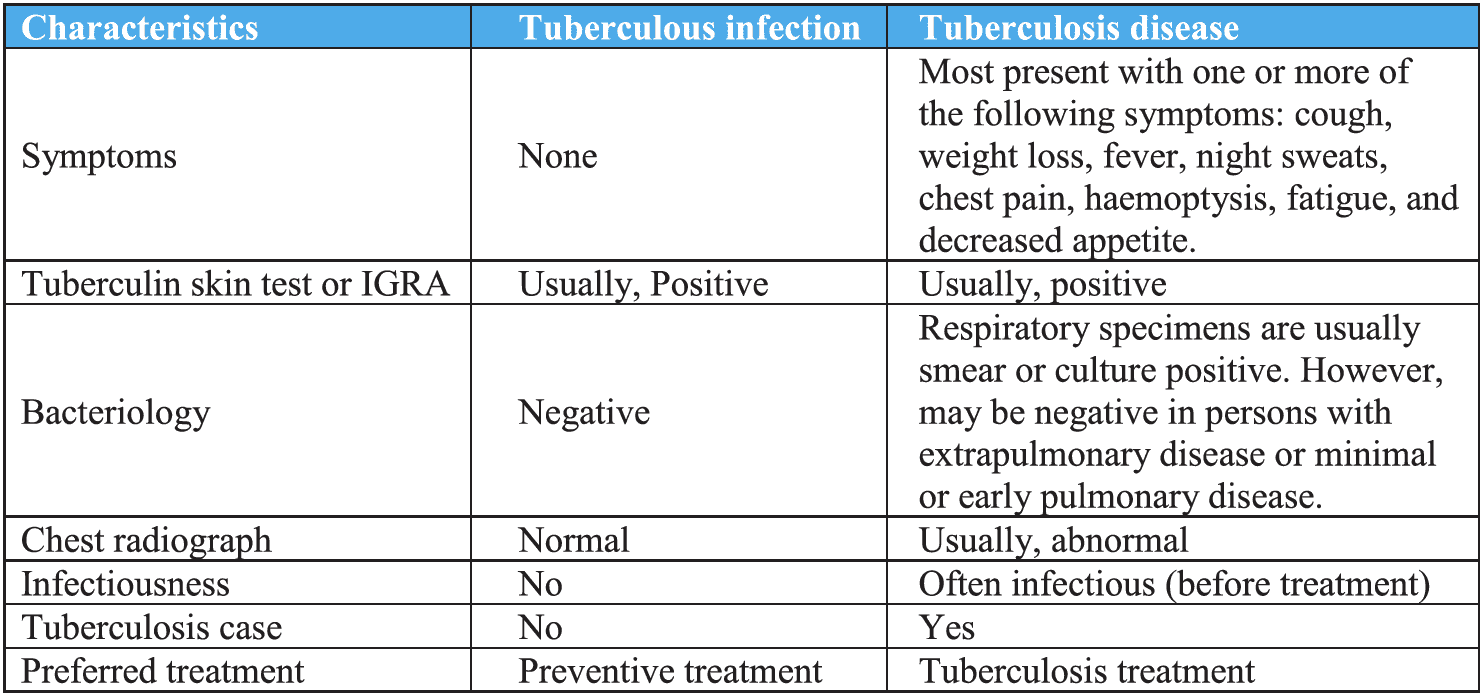Latent tuberculosis infection (LTBI) is the presence of Mycobacterium tuberculosis in the body without signs and symptoms, or radiographic or bacteriologic evidence of tuberculosis (TB) disease. About one quarter of the world’s population has latent TB infections. This means, they are infected by the TB bacteria but are not yet ill with the disease and may not transmit the disease. The life time risk of breaking down to disease among those infected with TB is 5–15%. However, this probability increases in certain conditions which weaken the immunity of the infected patient (HIV, DM, Malnutrition etc).
2.4 Difference between TB infection and TB disease
exp date isn't null, but text field is
This takes place when the immune system of a person is not able to prevent the bacteria present in the lungs and/or other organs from multiplying. This active multiplication is accompanied by various signs and symptoms like cough, weight loss, fever, night sweats, chest pain, haemoptysis, fatigue, and decreased appetite. This is known as TB disease.
When a person develops active TB disease, the symptoms (such as cough, fever, night sweats or weight loss) may be mild and go unnoticed for many months. This can lead to delays in seeking care, and results in continued transmission of the bacteria to others. A smear positive pulmonary TB cases can infect 10–15 other persons through close contact over the course of a year.
Characteristics of individuals with tuberculous infection and tuberculosis disease

